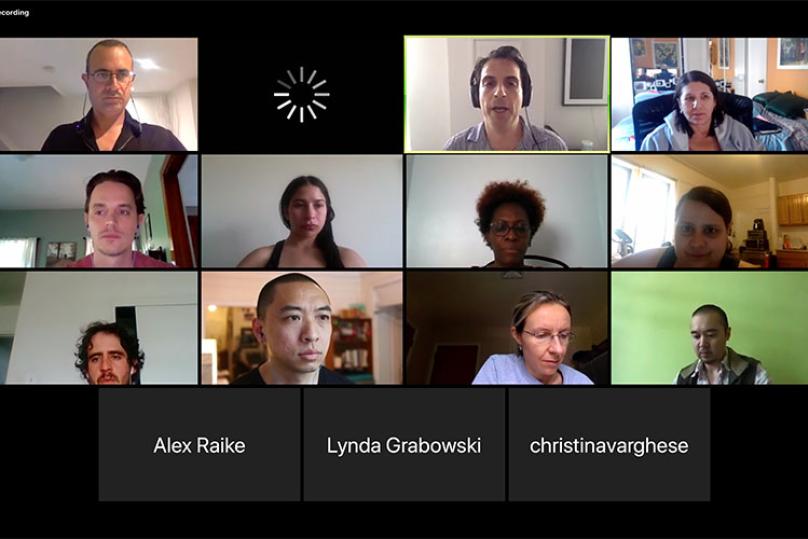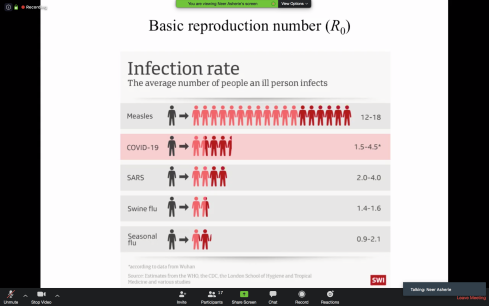
Epidemics are undoubtedly terrible, and irrational responses can make them worse. Mathematics offers a better way of understanding by using critical thinking and calculations to recognize what is going on, what could happen in the future, and how to reduce the negative impacts of an epidemic. In the MƒA virtual mini-course “Rational Response: An Introduction to the Mathematics of Epidemics,” MƒA teachers developed mathematical models to understand how infections spread, and analyze trends and potential outcomes of the current COVID-19 pandemic.
In the virtual course, facilitated by Professor of Physics and Biology at Yeshiva University Neer Asherie, Ph.D., and MƒA Master Teacher Michael Paoli via Zoom, teachers processed public NYC health data to calculate the doubling time and basic reproduction number (r0) that describes the beginning of an epidemic; how to predict the peak; and how to determine the herd immunity level needed to end an epidemic. “Using mathematics is a way to dispel fear and anxiety as well as to create a rational response to reduce the negative impact of an epidemic,” said Paoli.
“The benefits of bringing together mathematics and data helps epidemiologists make logical public health decisions, like social distancing, and helps government and health officials allocate necessary resources, such as hospital beds or medical staffing,” said MƒA Master Teacher Geoffrey Enriquez, who participated in the course. “From our work, I understand that COVID-19 will be around for a long time, but connecting math, science, and public health will enable the best decisions to be made to protect the public.”

This course gave teachers a chance to collaborate to make sense of the numbers surrounding the pandemic, while continuing to build community. “These virtual learning courses provide a way for us to stay connected with the MƒA community, as well as to continue growing and learning, even though we can’t share a physical space,” said Suzette Nelson, MƒA Master Teacher, who also participated in the course.
MƒA teacher participants like Geoffrey and Suzette plan to take what they learned back to their classrooms this fall, teaching their students about the math and science behind pandemics to inform them about steps and behaviors they should take to slow the rate of infection and prepare for the future.